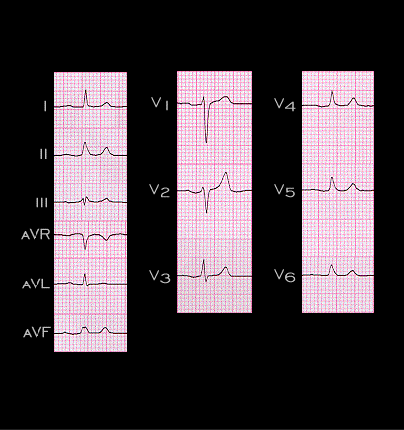
The hyperpotassemia was reversed by the intravenous administration of glucose and insulin and sodium bicarbonate and by hemodialysis. This ECG was recorded after the serum potassium had fallen to 5.6mM. P waves are now present. They are of low amplitude but are otherwise normal. The PR interval is 0.20 seconds, the QRS duration is now 0.08 seconds, the QT interval is 0.36 seconds and the tracing is normal.
